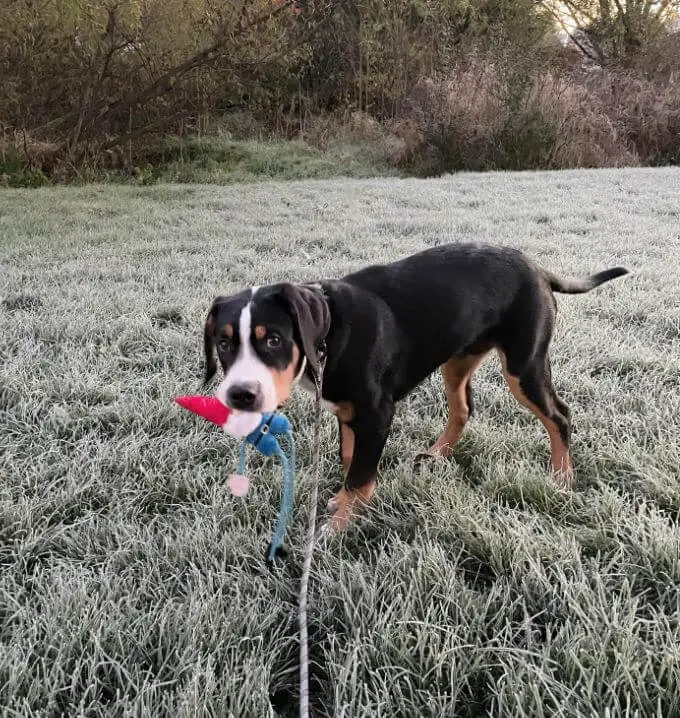Teething is a natural and necessary process for puppies as they transition from milk teeth to their adult teeth. Just like human babies, puppies experience discomfort and may exhibit certain behaviors during this stage. As a responsible pet owner, it’s important to understand how to support your puppy through the teething process. In this article, we will provide valuable tips and remedies to help ease your puppy’s teething discomfort and protect your belongings from their chewing instincts.

#1 – Recognizing Teething Symptoms:
Before diving into remedies, it’s crucial to recognize the signs of teething in puppies. Common symptoms include increased chewing behavior, swollen gums, drooling, irritability, and even mild appetite changes. By understanding these signs, you can better empathize with your puppy and respond appropriately.
#2 – Provide Appropriate Chewing Items:
Puppies have an innate need to chew during teething. To redirect their chewing behavior away from your furniture or personal belongings, offer a variety of appropriate chewing items. Look for sturdy and safe puppy teething toys made of rubber or nylon that provide relief for their sore gums. Avoid toys that are too hard or small, as they can pose a choking hazard.
#3 – Cooling Relief:
Cold can provide soothing relief for your puppy’s sore gums. Consider freezing a wet washcloth or a puppy teething toy to provide a cooling sensation. Supervise your puppy during these chewing sessions to ensure they don’t chew off and swallow any small pieces.

#4 – Teething Treats:
Special teething treats designed for puppies can be a helpful addition to their teething routine. Look for treats that are specifically formulated to promote dental health and provide relief during teething. These treats are often softer and chewier, making them easier for your puppy to enjoy while soothing their gums.
#5 – Frozen Treats:
Another way to provide relief is by offering frozen treats. You can freeze a small amount of unsweetened applesauce or low-sodium chicken broth in an ice cube tray. These frozen treats can offer both a cooling effect and a tasty distraction for your teething puppy. Remember to monitor your puppy while they enjoy frozen treats to prevent any potential choking hazards.
#6 – Gentle Massage:
A gentle massage of your puppy’s gums can help alleviate discomfort. Using a clean finger or a soft toothbrush specifically designed for puppies, apply light pressure to their gums in a circular motion. This can provide temporary relief and help desensitize their gums to touch.
#7 – Maintain Good Dental Hygiene:
Even during teething, it’s important to establish good dental hygiene habits for your puppy. Introduce them to a puppy-friendly toothbrush and toothpaste recommended by your veterinarian. Start by gently brushing their teeth a few times a week to get them accustomed to the process and promote healthy oral hygiene.

Teething can be a challenging time for both puppies and their owners, but with the right knowledge and proactive measures, you can help your puppy navigate this stage with minimal discomfort. By providing appropriate chewing items, utilizing cooling relief methods, and offering teething treats, you can redirect their chewing behavior and soothe their sore gums. Remember to monitor your puppy closely and consult with your veterinarian if you notice any concerning symptoms or have questions about your puppy’s teething process. With patience, care, and the right strategies, you can help your puppy through teething and lay the foundation for a lifetime of good oral health.
